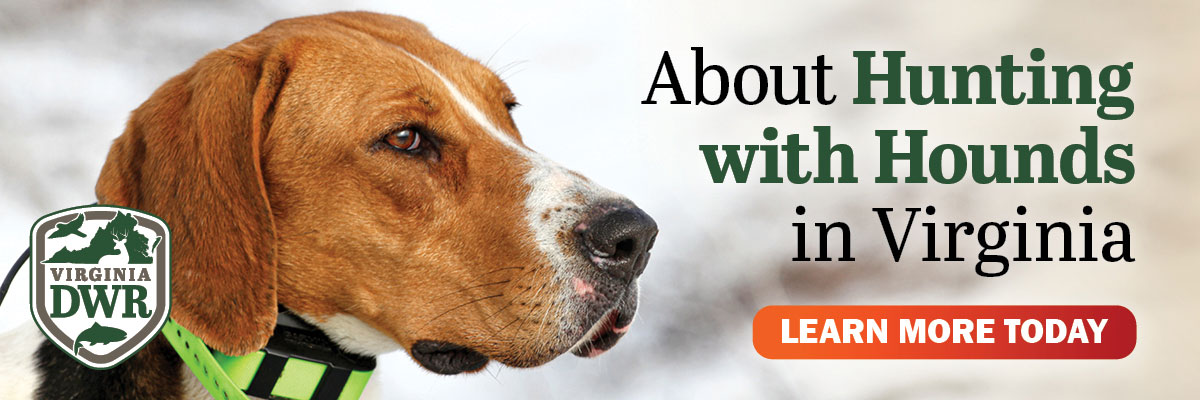By Bruce Ingram
A simple answer as to why five different fall turkey seasons exist in Virginia is because turkey numbers themselves vary so much in various parts of the Old Dominion. And the reason why turkey numbers vary so much does not have a simple answer, says Virginia Department of Wildlife Resources (DWR) Upland Game Bird Biologist Mike Dye. To better explain why this is so, the biologist delves into how different it is to manage wild turkey populations compared to deer.
“With deer, if lower harvests occur across several years, deer numbers will often predictably increase in a linear fashion,” he said. “In some situations, turkey populations will increase predictably but often they will not. Even if turkeys are not hunted for several years, their numbers may not increase because of poor reproduction or simply low survival due to factors other than hunting. There are lots of ways a turkey can die, including predators, parasites, disease, illegal harvest, and even exposure.
“On the other hand, several years of excellent turkey reproduction could cause a local population to boom. There are many factors that go into why turkey reproduction can be good or poor…besides weather. These boom and bust years are frustrating to hunters and managers alike.”
Furthermore, continues Dye, each county is its own management unit. But DWR tries to geographically manage, as much as possible, counties that historically have been grouped together. DWR, for instance, does not want to have a single county with one season surrounded by a sea of counties with another season. Occasionally, this still occurs, but they do try to keep counties grouped as much as possible.
Spring gobbler regulations do not vary statewide, but DWR does manage fall turkey populations based on the spring harvest. The agency uses the number of gobblers killed per square mile of suitable habitat as a population index. That index helps determine the length of the fall season as the number of hens harvested can be controlled somewhat by the existence or length of seasons, as well as how much overlap with deer firearm seasons.
For example, no season exists in Arlington County and the cities of Chesapeake, Norfolk, Portsmouth, and Virginia Beach. Dye says these locales historically have not had seasons and don’t harbor enough turkeys to justify a season.
A band of nine counties in Northwest Virginia along and near the border of West Virginia have the most restrictive season, consisting of two weeks and Thanksgiving Day.
“These counties have not had the population growth that others have had in recent years,” Dye said. “When we look at setting seasons, we look at both the harvests over the past 10 years as well as the past three years. The goal always is to do what is best for the turkey resource, and we can be more accurate in that determination if we know both the short- and long-term population trends.”
A third group of counties, located in Southwest Virginia, the Northern Piedmont and Upper Tidewater, features the longest season, the early two-week season, a two-day Thanksgiving one, most of December, and the two-week winter season.
“Turkey populations there are doing well, have a good harvest index, and are meeting population objectives,” in these areas, Dye said. “Because of this, they can sustain a certain level of hen harvest without negative population impacts.”
A fourth contingent of counties closes its fall season in mid-December and does not offer a winter season.
“Generally, these counties have had turkey populations that more recently have rebounded and are still building up,” Dye explained. “They are doing pretty good, but they need more time before the season should be extended.
A fifth group of counties (and these counties are truly scattered across the state) offers the early, Thanksgiving, and winter seasons but closes the December segment in mid-month.
“The difference between this grouping and the one with the longest season is pretty small,” Dye said. “This grouping is doing well with turkey harvests, but not quite well enough to extend the season throughout most of December, especially where there may be significant overlap with deer firearm seasons as that can cause hen harvest to increase beyond what is desired.
“In the Southern Piedmont of this region, we have a number of fall turkey dog hunters that really enjoy the January season where they can run their turkey dogs with the deer season closed. Social factors such as this can also be part of the reason a season is a certain length, too.”
Dye related that DWR over the next few months will be working on its next Virginia Wild Turkey Management Plan. The new plan will assist DWR in determining how to shape and structure future seasons and hunting opportunities. As the process unfolds, there will be opportunities for public involvement, so stay tuned.


